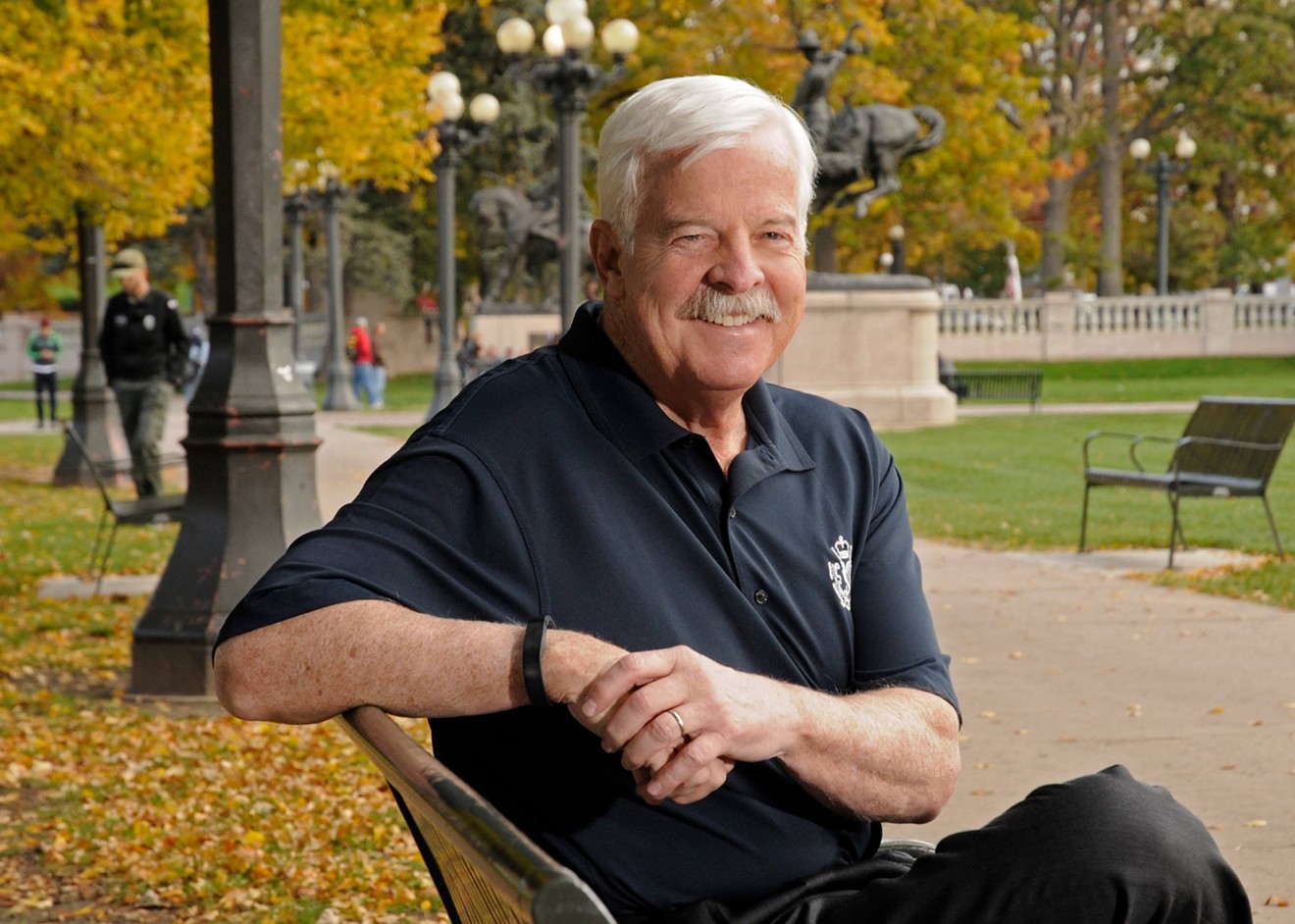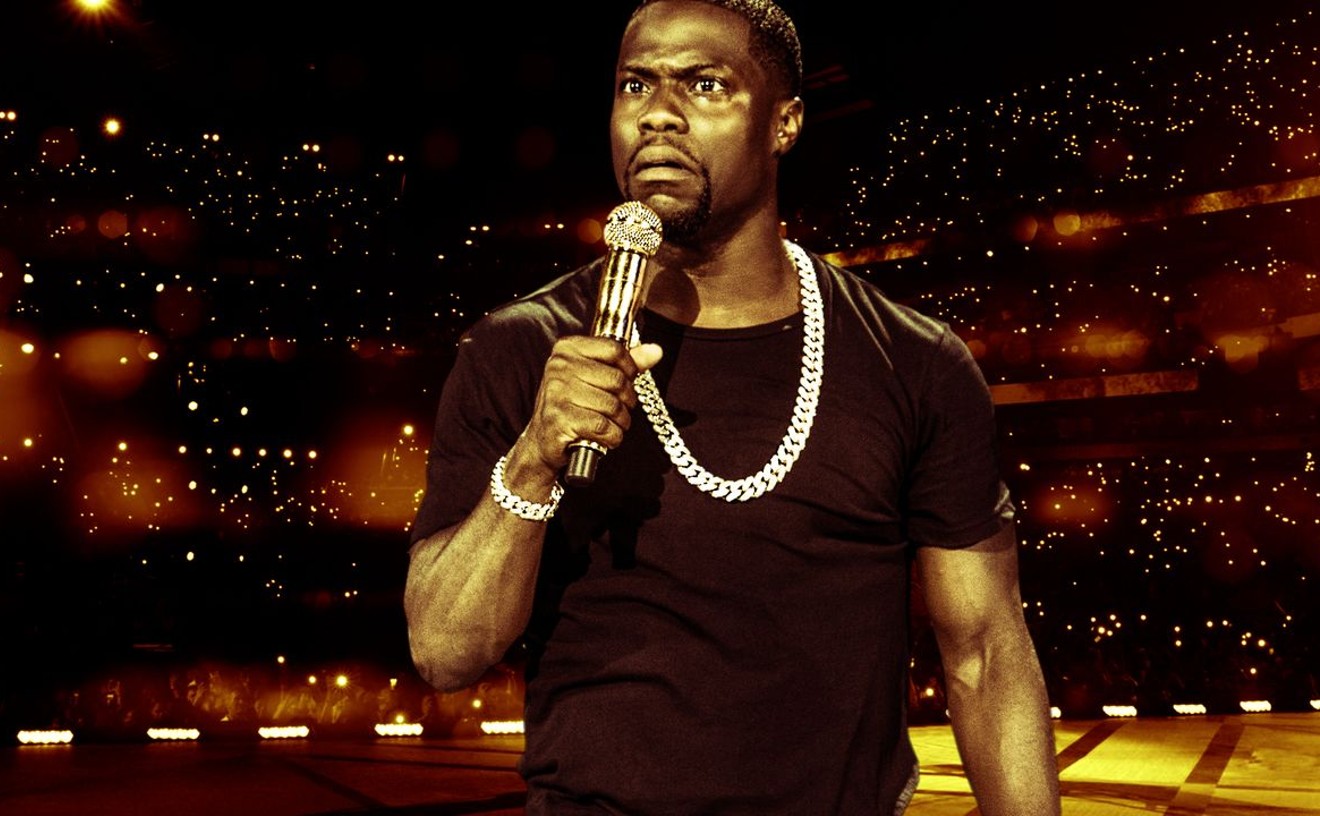In recent years, O'Brien has done the same with the Denver Zoo and the Denver Botanic Gardens, looking at both how Denver is using its money and the internal operations of the private organizations that have contracts with the city. When he was elected to the independent office, O'Brien says, he made it his duty to dig into the largest cultural organizations and their relationships to the city, because they had never been audited before.
"If there are taxpayer dollars involved, that’s the role of the auditor — to see how are those dollars being used," he tells Westword. "Are they being used to further the objectives of the program, or could they be used better?"
O’Brien’s audit of the DAM is filled with questions as to whether the city actually knows which art and buildings it owns. He also claims that a lack of transparency from the museum, which refused to share a collection management database digitally, stymied his team's investigation. The just-released report, which was not triggered by any complaints about the relationship between the city and the DAM, recommends that the parties revisit their agreement to avoid potential legal squabbles; O'Brien goes so far as to suggest that the museum may have sold works that belong to the city, among other gripes.
But higher-ups at both the city and the museum say they do have clarity regarding who owns what (the city owns the Hamilton Building outright, and the Martin Building is co-owned), that there are no disputes about sales, and that the relationship and contracts they have had in place for decades work. Beyond that, the DAM insists it made the collection database available to the auditor's office — just not in the format that O'Brien would have preferred.
“I think it’s the auditor’s opinion that there’s ambiguity,” says Andrea Fulton, deputy director of the DAM. “That is totally his opinion to have. I think we disagree with that opinion. We feel pretty strongly we have a good hold on how things work, and have a ninety-year history with the city that has gone pretty well.”
Why fix what isn’t broken? O'Brien's argument, based on fallouts between museums and other cities, is that costly legal trouble could arise.
“The city needs to know what it owns and what it is responsible for, should something go wrong or need fixing in the future,” O’Brien noted in a January 21 statement accompanying the audit report. “The city and the museum have put off making a new agreement for long enough. We need a clear understanding of responsibilities now, before a potential dispute that could lead to taxpayers’ money going toward a costly legal battle.”
But according to city and museum officials alike, nothing is unclear. They have a contractual understanding and don’t need a new agreement when the contract between them has worked for decades, they say; while both entities agreed to address multiple issues that arose in the audit, neither is eager to retool what has proved to be a functioning partnership.
“There are no disputes between the city and the Denver Art Museum, and that relationship is strong and healthy,” says Michael Strott, spokesman for Mayor Michael Hancock. “The Mayor’s Office agreed with six of the seven recommendations in the report, which will go a long way toward addressing the concerns raised by the audit. However, we felt it was premature to leap straight to creating an entirely new operating agreement before we’ve implemented those six recommendations and before we’ve had a chance to consider whether a new operating agreement is what’s really needed.”
The DAM agrees with the mayor on that point. “Part of what could be easily misinterpreted in the audit is that we’re adversarial [with the city] in some fashion, which is absolutely not the case,” Fulton explains. “We collaborate constantly with different departments in the city. We’re very much on the same page with the city.”
Not that the auditor had access to that page, according to the report. O'Brien explained that his team could not fully assess which assets belonged to the city and museum “because museum officials refused to provide a full digital copy of the museum’s collection management database and because documentation of asset ownership between the city and the museum is vague and incomplete.”
But the DAM says it gave the auditor's office full access to its database and assigned staff the task of walking auditors through the information, explaining the finer points of how museums catalogue data. The museum treats its database in the exact same way it treats the art: It keeps the data in-house. According to Fulton, sending digital files regarding the 70,000-some pieces it owns and the 100,000-plus items in the catalogue would be a security breach and against best practices in the museum world.
But the auditor argues that the data would be secure with him. “My office has safeguards and protocols in place for working with sensitive or protected data,” O'Brien explained in his statement. “I want to trust that the art museum is tracking art inventory properly, but as auditors, we must be able to verify.”
And digital data is easier to sift through using the auditor's software, he notes: "If we have the data, we have a number of people pretty good at data analytics that can slice and dice the information in various ways." But that was not possible on the museum's site.
Without being able to dig into the data with his office's tools, there were some issues he could not understand. For example, during the audit, O'Brien's team "found two pieces of art that were recorded in the art museum’s system as belonging to the city, and they were listed as sold,” he wrote in his statement.

The Denver Art Museum receives around 5 percent of its annual funding from the City of Denver.
Markus Byron
But that's not good enough for O'Brien, who says, "Unless we can get into the database and view the database, we could not get comfortable with the information we could get to."
Still, the museum and city have agreed to formalize who owns what, one of the suggestions made by the auditor. But they haven't agreed to rework their contract. “When it came to the agreement, we don’t have any disagreements with the city,” says Fulton. “Obviously, the agreements we’ve operated under have served us and, most importantly, the public pretty well. That’s not a conclusion to be taken lightly, to redo all our agreements. If and when problems arrive, we are absolutely open to the solutions. Pre-determining the solution to problems that have yet to arise may not be prudent.”
The auditor's report also made a series of recommendations about how the DAM should be governed, including bylaw revisions, adding a city representative to the board of trustees, and increasing financial literacy training for the board, which Fulton says the museum plans to address.
The report also suggested that the DAM diversify its board, since its current composition could influence the museum’s curatorial approach. But while the fact that the DAM board is largely composed of wealthy white men has long troubled many in the city’s cultural scene, the audit provides little evidence that the makeup of the board has affected the museum’s actual calendar, programming or recent acquisitions. Of late, the DAM has offered an increasing number of shows by artists of color and women, with looks at Indigenous, Black and Latinx art created both locally and internationally.
The DAM was well aware of the limitations of its board before the audit began, Fulton says, and has been working on greater representation from communities of color and women. It's also made strides addressing concerns regarding leadership and bylaw revisions.
Fulton says that the various museum accrediting organizations and the Scientific Cultural Facilities District, one of the museum's largest funders, review the DAM's operations regularly and have a deeper understanding of the inner workings of the institution than the auditor's office does.
"As a big art museum, we have rigorous accreditation and evaluations," Fulton says. "We’re always open to feedback and improving. From a process standpoint, we’re always interested in what outside eyes see, and are there areas to improve upon?”
Prior to the 1980s, the City of Denver was a significant financial partner of the DAM. But as it weathered an economic crisis that decade, the city slashed its funding and oversight of the museum, encouraging the DAM and other cultural organizations to operate on their own. Over the past two years, the city has doled out more than $17 million each year in bond money approved by voters for renovations on buildings owned by both entities. But the city funds roughly just $1.5 million or around 5 percent of the museum’s annual operations — and the amount of involvement the auditor suggests the city should have over the institution would be disproportionate to its financial involvement.
Since the pandemic hit, the DAM has had to worry about more than an audit; it's been trying to make it through the pandemic without shutting its doors.
“Between trying to keep our staff safe and visitors healthy and give experiences people need to be part of community, we’re not going to focus solely on this,” says Fulton. “It is important information, and information we’re going to leverage into the future.”












